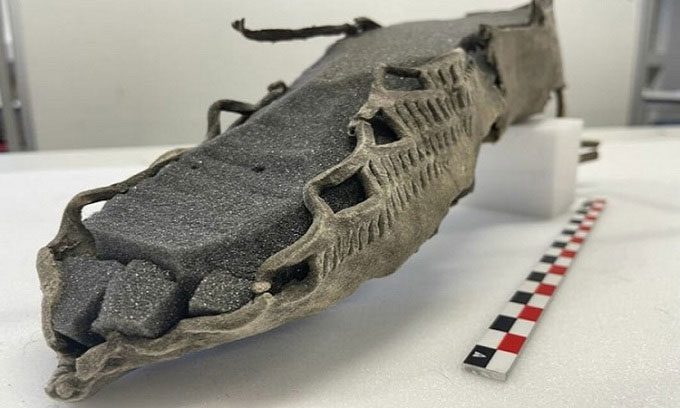Secrets of the Ice, an archaeological organization specializing in the search for artifacts in the Norwegian mountains, has discovered a Roman sandal buried deep under the snow in the midst of a perilous pass.

The sandal artifact displayed at the Oslo Museum. (Photo: Arkeonews)
Archaeologists found the sandal in the Lendbreen Pass on the Jotunheim mountain range, located 322 km northwest of Oslo. This pass was an important route during the Viking Age before the advent of paved roads, frequently used by Vikings and medieval travelers from 300 to 1500 AD.
According to the lead researcher, Espen Finstad, the sandal, which has several holes, was buried under layers of snow at an elevation of nearly 2,000 meters. This item dates back to between 200 and 500 AD, coinciding with the late Roman Empire period. Finstad suggests that ancient people likely wore this type of lace-up sandal along with fabric or animal skin, serving as a kind of sock. Lars Pilo, a glacial archaeologist and member of Secrets of the Ice, believes that the sandal may have been discarded by its user when it became worn out.
Conservator Vegard Vike has studied the sandal currently displayed at the Natural History Museum in Oslo and created a replica before its shape changed during the freeze-drying preparation process. This discovery sheds light on the characteristics of the pass, its inhabitants, and the number of people who frequently traversed it.
As the ice melts, the research team hopes to uncover more artifacts to identify the communities that once visited the Lendbreen Pass in ancient times.





















































